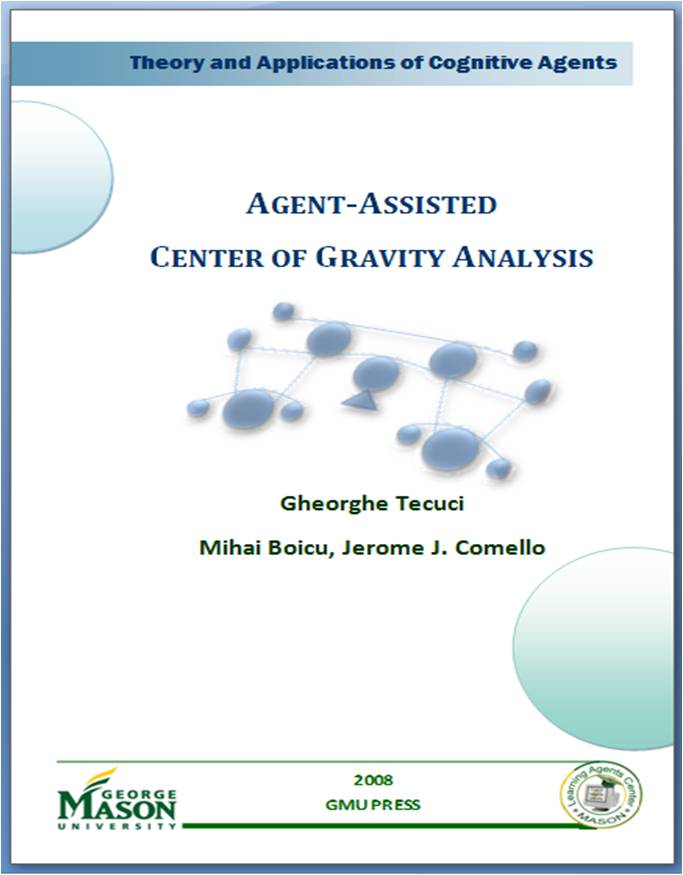Forward

|
Forward |
|
The Center of Gravity should be a controlling concept in the design and conduct of military campaigns and major operations. Defining each belligerent’s center of gravity is essential to planning, maintaining focus on the goals, and allocating resources.
This monograph is a unique contribution to the theory and practice of center of gravity analysis. It presents a systematic method and introduces an intelligent agent that assists a military leader to analyze a (historic, current, or even future) situation and to determine the strategic center of gravity candidates of the opposing forces and their critical vulnerabilities. The model supporting this effort is not only robust and flexible but it is also simple enough for any strategic planner or student of the art of war to use in investigating center of gravity concepts and processes. It is also a groundbreaking contribution in the application of Artificial Intelligence to center of gravity determination, recognized with the Innovative Application Award by the Association for the Advancement of Artificial Intelligence.
The Center for Strategic Leadership has a long tradition in researching this important concept and this monograph is a direct result of the research of the members of the faculty and students of the U.S. Army War College and George Mason University. The Disciple-COG agent has been used in several US Army War College courses and has proven to be exceptionally useful in the education and training of military personnel, teaching them to follow a systematic approach to center of gravity analysis.
As Clausewitz has said, “Everything in war is simple, but the simplest thing is difficult.” This comment applies to Clausewitz’s “On War” as well. The concept of the Center of Gravity is simple, yet the faculties of the Senior Service Colleges, the Service Staffs and Combatant Commands debate its meaning endlessly and its definition and application in Joint Doctrine is continually evolving. Given its central nature in military planning the concept is deserving of all the attention it receives. Therefore, this monograph, which presents an artificial intelligence approach to center of gravity analysis, broad, flexible and consistent with current Joint Doctrine, represents a very significant theoretical, educational, and practical advancement.
Professor Douglas
B. Campbell
Director, Center
for Strategic Leadership
U.S. Army War
College